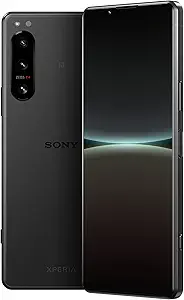In the fast-paced world of smartphones, two giants stand at the forefront of innovation and consumer loyalty: Apple and Sony. With their distinct approaches to design, functionality, and user experience, comparing Apple's iPhones with Sony's Xperia smartphones unveils a fascinating juxtaposition of philosophies. From sleek aesthetics to cutting-edge technology, each brand brings its unique strengths to the table. Let's delve into the realm of these tech behemoths and uncover the nuances that set them apart.
Key Features Comparison
Product Selection
Apple and Sony stand as two esteemed entities in the realm of mobile technology, each boasting a distinct array of offerings. Apple's product lineup, though modest in its variety, garners acclaim for its premium quality and pioneering attributes. Take, for instance, the latest iteration of the iPhone 12 series, which ushered in 5G capabilities, the A14 Bionic chip for enhanced performance, and Ceramic Shield technology for heightened durability against drops. However, Apple's offerings tend to come with a heftier price tag compared to competitors, coupled with a more limited spectrum of design choices and customization options. Conversely, Sony presents a broader spectrum of smartphones, catering to diverse consumer demographics. The flagship Xperia series, epitomized by the Xperia 1 II, is lauded for its professional-grade camera innovations drawn from the realm of Alpha cameras, its 4K HDR OLED display, and 5G compatibility. Meanwhile, the Xperia L series targets the budget-conscious segment without sacrificing essential functionalities. Despite these merits, Sony smartphones have faced criticism for their uninspired design, and the brand's market footprint pales in comparison to Apple's, potentially impacting the availability of accessories and customer support. In juxtaposition to Apple, Sony offers a more expansive product range but falls short in terms of market dominance and design ingenuity.
Design/Look
Apple and Sony mobile devices are both celebrated for their visual appeal, yet they adopt disparate strategies in this realm. Apple's mobile devices, particularly the latest iterations such as the iPhone 12 Pro Max, are esteemed for their streamlined, understated aesthetics. They boast a ceramic shield front facade, a glass posterior, and a stainless-steel chassis, imparting a sense of opulence and refinement. The design is also notably ergonomic, with rounded edges and flat borders that enhance the device's graspability. Nevertheless, the glass back, though visually pleasing, may be susceptible to smudges and fingerprint marks. Conversely, Sony's mobile devices, exemplified by the Sony Xperia 1 II, embrace a more utilitarian, rectangular design ethos. They sport a glass front and rear encased within an aluminum framework, endowing them with a robust, resilient demeanor. Sony also integrates a distinctive 21:9 aspect ratio, ideal for cinematic viewing experiences but potentially unwieldy for certain users. Moreover, Sony's mobile devices typically exhibit greater resistance to dust and moisture in contrast to Apple's offerings, owing to their IP65/68 certification. Nonetheless, their design may elicit mixed reactions, as some users might perceive them as excessively boxy and less ergonomic compared to Apple's mobile devices.
Affordability
Apple and Sony mobile devices stand as popular contenders in the global market, yet they diverge notably when it comes to pricing. Apple's mobile devices, especially the latest iterations such as the iPhone 12 Pro Max, are typically positioned within the premium echelon of the market. Their pricing reflects their inclusion of upscale features, cutting-edge technologies like the A14 Bionic chip, 5G connectivity, a Pro-grade camera system, and the brand's renowned reputation for excellence and forward-thinking innovation. However, this elevated price point may prove prohibitive for certain consumers. Conversely, Sony's mobile devices, exemplified by the latest Xperia 5 II, are priced more moderately. They proffer competitive attributes such as a 120Hz Refresh rate display, Dolby Atmos audio enhancement, and a top-notch triple-lens camera setup. While they may lack the same cachet or ecosystem as Apple, they deliver commendable value for their cost, rendering them a more attainable option for numerous consumers. Nevertheless, in comparison to rival brands within a similar price bracket such as Samsung or Xiaomi, Sony's mobile devices often encounter challenges in distinguishing themselves in terms of features and pioneering advancements.
Quality/Durability
When it comes to the quality and durability of smartphones, both Apple and Sony have their strengths and weaknesses. Apple smartphones, particularly the latest models such as the iPhone 12 Pro Max, are known for their high-quality build and design. They are made with durable materials like Ceramic Shield front cover, offering four times better drop performance, and surgical-grade stainless steel. However, the glass back design of Apple smartphones can be prone to damage if dropped without a protective case. On the other hand, Sony smartphones, like the Sony Xperia 1 II, are also built with quality materials. They feature Gorilla Glass 6 on both the front and back for protection against drops and scratches, and an aluminum frame that adds to its durability. Furthermore, Sony smartphones are known for their water and dust resistance, which gives them an edge in terms of durability. In comparison to other brands, Apple smartphones tend to be more expensive, but they offer a seamless ecosystem with other Apple devices and services, which many users find valuable. Sony, while not as popular as Apple, offers unique features such as a 21:9 CinemaWide display and Dolby Atmos sound, which appeals to users who prioritize multimedia consumption. However, Sony's durability could be compromised with its open USB port design, which may allow dust and debris to enter. Both brands offer smartphones with high-quality build and durability, but the choice between the two often comes down to individual user preferences and needs.
Reputation
Apple mobile devices, particularly the iPhone series, enjoy a formidable standing in the global marketplace. Renowned for their polished aesthetics, intuitive user interface, and cutting-edge innovations, Apple has cemented its position as a top-tier brand. The integration of pioneering technologies such as Face ID, the A14 Bionic chip, and 5G capabilities into their latest iterations further bolsters their reputation. Nonetheless, the brand frequently faces criticism for its premium pricing and limited interoperability with non-Apple products. In contrast, Sony mobile devices, within the Xperia lineage, are esteemed for their durable construction, high-resolution camera systems, and distinctive features such as water and dust resistance. Sony's most recent offerings boast the Qualcomm Snapdragon 865 processor and state-of-the-art 5G connectivity. However, Sony has not attained the same level of market penetration as Apple, largely owing to its less user-friendly interface and sporadic software updates. While Sony mobile devices present a more budget-friendly option compared to Apple, they lack the extensive array of applications and services offered by the Apple ecosystem.
Customer Support & Warranty
When discussing customer assistance, Apple mobile devices have consistently earned praise for their outstanding service offerings. The corporation provides a diverse array of support avenues, encompassing telephonic assistance, chat functionality, electronic mail correspondence, and in-person consultations at Apple Retail outlets. Their online support infrastructure is extensive, featuring a vast repository of knowledge, community discussion boards, and the option to arrange telephonic consultations or chat sessions with a representative. Additionally, Apple furnishes AppleCare+, an elevated support package that prolongs the warranty period and includes coverage for accidental damages. Nonetheless, it's worth noting that this service comes at a premium cost, which may accumulate over time. In contrast, Sony mobile devices also deliver a satisfactory level of customer support, albeit not as comprehensive or readily accessible as Apple's offerings. Sony provides telephonic and electronic mail support, alongside an online forum for user interactions. Their website further hosts a helpful FAQ section and an assortment of user manuals. However, Sony lacks physical retail establishments for direct customer assistance, presenting a potential drawback for users who prefer in-person support. Moreover, while Sony does provide warranties for their mobile devices, they do not furnish a premium support package akin to AppleCare+. This disparity may be viewed as a drawback for users seeking additional reassurance, though it could alternatively be perceived as an advantage for those wishing to avoid supplementary expenses associated with such services.
Battery Life
Apple smartphones, particularly the latest models such as the iPhone 12 Pro Max, are known for their impressive battery life. The iPhone 12 Pro Max, for instance, boasts a 3687mAh battery that can last up to 20 hours of video playback, which is a significant upgrade from its predecessors. However, it's also worth noting that the battery life of Apple smartphones can significantly decrease over time, especially if the device is frequently used for heavy tasks such as gaming or streaming. The battery life is also heavily dependent on the settings of the device, with features such as screen brightness and background app refresh significantly affecting the battery's longevity. On the other hand, Sony smartphones such as the Sony Xperia 1 II also offer commendable battery life. This device is equipped with a 4000mAh battery, which is larger than that of the iPhone 12 Pro Max. The Xperia 1 II also has a battery care feature, which slows down charging when it reaches 90% to prevent damage and prolong the battery's lifespan. However, despite its larger battery, the Xperia 1 II's battery life is not significantly longer than that of the iPhone 12 Pro Max due to its high-resolution 4K display, which consumes a lot of power. Therefore, while Sony smartphones may have larger batteries, the actual battery life may not always be longer than that of Apple smartphones.
Sound Quality
Apple and Sony smartphones both offer high-quality sound, but they achieve this in different ways. Apple smartphones, specifically the latest models like the iPhone 12 Pro and iPhone 12 Pro Max, use spatial audio with Dolby Atmos for an immersive sound experience. They also have a custom-designed Apple speaker system that delivers powerful, balanced sound. Apple's sound quality is consistently high across all its devices, and the audio is clear and crisp, with good bass levels. However, the lack of a 3.5mm headphone jack in recent models may be a downside for some users, requiring the use of Bluetooth headphones or an adapter for wired headphones. On the other hand, Sony smartphones, particularly the Xperia series like the Xperia 1 II and Xperia 5 II, are known for their high-resolution audio and Dolby Atmos sound. Sony's smartphones also come with a 3.5mm headphone jack, which is a plus for users who prefer wired headphones. Sony's Dynamic Vibration System is another unique feature that analyses audio data and lets you feel the action in your hands. However, while Sony's sound quality is excellent, some users have reported that the volume on Sony smartphones is not as loud as on other brands. Both brands offer high-quality sound, but the choice between them may come down to personal preference and specific needs.
Display
Apple smartphones, particularly the latest models such as the iPhone 12 Pro Max, are renowned for their Super Retina XDR displays. This technology offers high resolution (2778 x 1284 pixels), exceptional color accuracy, and HDR10 support for superior contrast and color range. The display also boasts a high brightness level of up to 1200 nits, which enhances visibility in direct sunlight. However, some users may find the notch at the top of the display, housing the front camera and facial recognition sensors, somewhat intrusive. On the other hand, Sony smartphones, like the Xperia 1 II, feature 4K HDR OLED displays. This provides a higher resolution (3840 x 1644 pixels) than Apple's smartphones, delivering incredibly detailed and sharp visuals. Sony's display also supports a wider color spectrum, thanks to its BRAVIA TV technology, and offers a 21:9 aspect ratio, which is ideal for watching movies and playing games. However, the brightness level is not as high as that of Apple's smartphones, which may affect visibility in bright conditions. Additionally, Sony's smartphone displays do not have the high refresh rates found in some other brands, which could impact the smoothness of scrolling and gaming.
Performance
Apple smartphones, particularly the latest models such as the iPhone 12 Pro, are known for their exceptional performance. They are powered by the A14 Bionic chip, the fastest chip ever in a smartphone, which ensures smooth operation even when running high-demand apps and games. The A14 Bionic chip also integrates a 16-core Neural Engine that can perform up to 11 trillion operations per second, enhancing the overall performance of the device. However, Apple smartphones are often criticized for their high cost, and their closed ecosystem may not be appealing to users who prefer more flexibility and customization. On the other hand, Sony smartphones, like the Xperia 1 II, offer solid performance with their Qualcomm Snapdragon 865 processor. This processor provides high-speed performance and energy efficiency, making it suitable for multitasking and running demanding apps. Sony smartphones also stand out for their gaming capabilities, thanks to the Game Enhancer mode that optimizes the device for gaming. However, Sony's user interface has been noted as less intuitive compared to Apple's iOS, and their smartphones typically have a lower resale value. Compared to other brands, both Apple and Sony offer high-performing smartphones, but Apple's devices tend to have a slight edge in terms of raw power and speed.
Camera Quality
Apple and Sony smartphones are both renowned for their high-quality cameras, but they each have their unique strengths and weaknesses. Apple's latest iPhone 12 Pro models feature a triple-lens rear camera system with a 12 MP ultra-wide, wide and telephoto lenses. The camera system also includes a LiDAR scanner for improved augmented reality experiences and Night mode portraits. The iPhone's camera software is highly optimized, offering features like Deep Fusion and Smart HDR 3 for better details and colors. However, the iPhone's camera system lacks a dedicated macro lens and manual control options. On the other hand, Sony smartphones, such as the Xperia 1 II, offer a triple-lens camera system developed in collaboration with their Alpha 9 series mirrorless cameras. The system includes a 12 MP ultra-wide, wide, and telephoto lenses, and a 3D iToF sensor. The Xperia 1 II also offers a 20 fps burst mode, eye autofocus, and full manual controls, which are features typically found in professional cameras. However, Sony's camera software is not as user-friendly as Apple's, and its low-light performance is not as strong as the iPhone's. In comparison to other brands, both Apple and Sony offer superior camera quality, but the choice between the two often comes down to personal preference for software optimization and specific features.
Related Video
Conclusion
In the ever-evolving landscape of smartphones, the rivalry between Apple and Sony remains a testament to innovation and consumer choice. While Apple's iPhones captivate with their elegant design, seamless performance, and ecosystem integration, Sony's Xperia smartphones stand out for their bold aesthetics, multimedia prowess, and imaging excellence. Whether you're drawn to the simplicity of iOS or the versatility of Android, both Apple and Sony offer compelling options that cater to diverse preferences and lifestyles. Ultimately, the choice between an iPhone and an Xperia boils down to individual priorities, whether it's design aesthetics, user experience, or camera performance. Regardless of which camp you belong to, one thing is certain: the competition between these tech titans continues to drive innovation and push the boundaries of what's possible in the world of smartphones.





![Sony Xperia 1 V 256GB 5G Factory Unlocked Smartphone [U.S. Official w/Warranty],Black](https://m.media-amazon.com/images/I/81YofuHBMZL._AC_SX679_.jpg)












